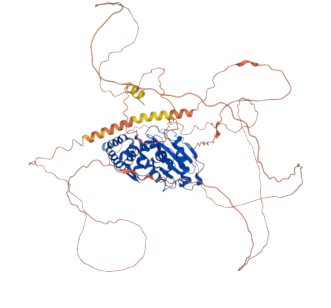New Study Reveals Fast-Sinking Marine Snow Challenges Physics Principles

In a groundbreaking study published in the Proceedings of the National Academy of Sciences on June 25, 2025, researchers have unveiled that tiny particles of marine snow, composed of organic matter and debris, sink faster than larger particles, contradicting long-standing principles of fluid dynamics. This unexpected finding has significant implications for our understanding of oceanic carbon cycling and climate change mitigation.
Marine snow is a term used to describe aggregates of dead and decaying organisms, plankton, fecal matter, and other organic materials that drift through the ocean, transporting nutrients and carbon from the sunlit surface to the ocean floor. The ecological importance of marine snow is profound; it serves as a critical food source for many deep-sea organisms and plays a vital role in the biological carbon pump, a process that sequesters carbon dioxide from the atmosphere into the ocean.
According to Robert Hunt, a researcher at Brown University and co-author of the study, "It basically means that smaller particles can sink faster than bigger ones. This occurs in stratified fluids, such as oceans, where density increases with depth." The researchers found that as smaller, porous flakes of marine snow absorb salt from the surrounding water, they gain enough mass to overcome the drag that typically slows down tiny objects. This process can lead to faster sinking rates, especially during periods of high plankton blooms when the ocean is rich in fine detritus.
The study's findings could recalibrate estimates of how much carbon reaches the deep ocean. The biological carbon pump is responsible for moving approximately 10.2 billion tons of carbon annually from surface waters to long-term storage beneath the thermocline. If smaller marine snow particles sink more rapidly than previously thought, this could alter our understanding of carbon sequestration and its role in climate change. This is especially relevant, as the ocean absorbs about 30% of the carbon dioxide emissions produced by human activities, according to the National Oceanic and Atmospheric Administration (NOAA).
Daniel Harris, an associate professor of engineering at Brown University, led the experimental design, which involved creating a tank that simulated the density gradient of the ocean. The researchers utilized 3D-printed molds to create particles of varying sizes and monitored their sinking behavior under controlled conditions. The observations confirmed their new formula for predicting sinking speeds.
The implications extend beyond carbon cycling. The study suggests that microplastics, which often mimic the behavior of marine snow due to their porous nature, may also sink faster than previously predicted. This has critical consequences for marine ecosystems, as faster sinking could redistribute pollution and toxins to the ocean floor, affecting deep-sea habitats and food webs.
As Hunt and Harris prepare to collaborate with oceanographers for further studies, they aim to deploy custom particles in real ocean environments to validate their laboratory predictions. Additionally, they plan to investigate how temperature gradients, frequently observed near polar ice and hydrothermal vents, might further influence the dynamics of particle sinking.
The study not only challenges established notions of particle dynamics in marine environments but also underscores the complexity of the ocean's carbon cycle and the necessity for refined models to accurately reflect these processes. Understanding the behavior of marine snow and its interactions with microplastics will be crucial as scientists seek to develop effective strategies for climate change mitigation, including innovative methods for enhancing carbon sequestration in the ocean.
In summary, this research provides a fresh perspective on marine snow, revealing that size does not always dictate sinking speed and highlighting the intricate connections between ocean processes and global climate systems. The findings could ultimately inform policy and environmental strategies aimed at addressing climate change and protecting marine ecosystems.
Advertisement
Tags
Advertisement





